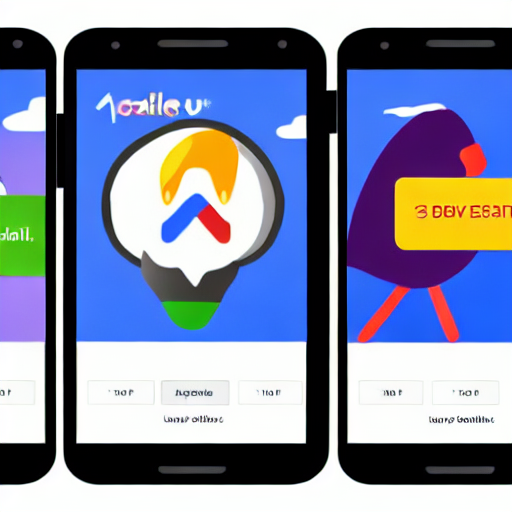

In today’s competitive app landscape, acquiring users isn’t just about luck; it’s a strategic, data-driven process. Traditional marketing methods often fall short when it comes to reaching the right audience for your mobile app. Google Ads offers a powerful solution, specifically designed to drive targeted user acquisition. This comprehensive guide will delve into how to leverage Google Ads for mobile app promotion, focusing on scaling your campaigns and achieving sustainable growth. We’ll cover everything from campaign setup and targeting to optimization strategies and key metrics. This isn’t just about running ads; it’s about building a robust user acquisition strategy powered by Google’s vast reach and sophisticated targeting capabilities.
The mobile app market is booming, but standing out from the crowd is a significant challenge. Many apps launch with initial downloads, but struggle to maintain momentum. Google Ads provides a direct pathway to reach potential users actively searching for apps like yours. Unlike broad online advertising, Google Ads allows you to target users based on their intent – those actively looking for solutions your app provides. This dramatically increases the likelihood of conversion. Furthermore, Google’s sophisticated tracking and analytics tools provide invaluable insights into campaign performance, allowing you to continuously refine your strategy and maximize your return on investment (ROI).
Google Ads operates on a pay-per-click (PPC) model. You only pay when someone clicks on your ad. Google’s algorithm then matches your ads to relevant searches and app listings. There are several campaign types specifically designed for mobile app promotion, each with its own strengths:
For most app marketers, starting with App Campaigns is highly recommended due to their automation and broad reach. However, a combination of campaign types can often yield the best results, allowing you to tailor your approach to specific goals.
Setting up your Google Ads campaigns effectively is crucial for success. Here’s a breakdown of the key steps:
Before launching any campaign, clearly define your objectives. Are you aiming for a specific number of installs? Are you focused on driving in-app purchases? Do you want to increase brand awareness? Your goals will directly influence your targeting and bidding strategies.
Keyword research is the foundation of any successful Google Ads campaign. Identify the terms users are searching for when looking for apps like yours. Tools like Google Keyword Planner, SEMrush, and Ahrefs can help you discover relevant keywords. Consider both broad and long-tail keywords. Long-tail keywords (longer, more specific phrases) often have lower competition and higher conversion rates.
Example: Instead of targeting just “fitness app,” you might target “best running app for beginners” or “weight loss app with personalized workouts.”
Google Ads offers a wide range of targeting options:
Google Ads can be seamlessly integrated with ASO efforts. By linking your Google Ads campaigns to your app store listing, you can track which keywords and targeting options are driving the most installs. This feedback loop allows you to continuously optimize your ASO strategy.
Your bidding strategy determines how much you’re willing to pay for each click. Google Ads offers several bidding strategies:
For new app marketers, starting with automated bidding is generally recommended. As you gain experience and data, you can gradually transition to manual bidding.
Running a successful Google Ads campaign isn’t a “set it and forget it” process. Continuous optimization is essential. Here’s how to track and improve your performance:
Monitor these key metrics:
Experiment with different ad creatives, targeting options, and bidding strategies to see what performs best. Google Ads allows you to easily A/B test different variations of your ads.
Identify and add negative keywords to prevent your ads from showing for irrelevant searches. For example, if your app is for serious runners, you might add “free” or “beginner” as negative keywords.
Ensure that conversion tracking is properly set up to accurately measure your app installs and in-app purchases (if applicable).
Regularly analyze your campaign data to identify trends and opportunities for improvement. Use Google Ads reports to track your performance over time.
Don’t just look at the numbers; understand *why* your campaigns are performing the way they are. Use this insight to make informed decisions about your strategy.
By following these tips, you can effectively use Google Ads to drive app installs and grow your user base.
Remember to stay updated on Google Ads best practices and algorithm changes to maximize your results.
Good luck!
This is a comprehensive overview of using Google Ads for app promotion. It’s a complex field, and ongoing learning and adaptation are crucial for success. Consider investing in training or consulting services if you need more in-depth support.
Tags: Google Ads, Mobile App Promotion, User Acquisition, App Marketing, Google Ads Campaigns, App Advertising, User Acquisition Strategy, App Growth, Mobile App Advertising
[…] Agencies are staffed by experienced PPC professionals who dedicate their entire careers to understanding Google Ads. They possess in-depth knowledge of keyword research, bidding strategies, ad copy creation, […]